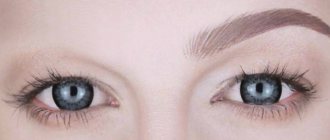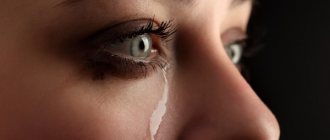Not everyone has thick, long eyelashes and beautiful eyebrows by nature. In addition, there are a number of external factors that adversely affect them. But today, thanks to eyebrow and eyelash transplantation, it is becoming possible to achieve a qualitatively new result. A deep and beautiful look without complex operations and tattooing is possible.
The service is mainly of interest to girls who want to make their eyelashes and eyebrows more expressive. However, it cannot be denied that eyebrow and eyelash transplantation is also relevant for men. Often in case of tissue trauma. For example, if there is a large scar in this area where hair does not grow. Transplantation allows you to hide this defect once and for all.
If you want to add volume to your eyebrows and eyelashes, or hide congenital or acquired defects, contact clinics in Israel, Germany and South Korea. Here, qualified specialists with many years of experience work with each client. To begin with, we suggest considering all the details of the transplant.
Indications for transplantation and the psychological side of the issue
Transplantation can be indicated both for people who simply want to increase the volume of eyelashes and eyebrows, and for those who have lost them partially or completely. Hair loss is often caused by burns, scarring, and chemotherapy. Also among patients there are often people suffering from trichotillomania. However, in the latter case, surgery is possible only if there is written confirmation of stable remission. Otherwise, due to his bad habit, a person will simply gradually pull out the transplanted hair. This makes the operation simply pointless. Therefore, you may first need to work with a psychologist and other specialists.
With all this, the bulk of patients are simply people who are dissatisfied with the volume and thickness of their eyebrows and eyelashes. For them, this is a completely simple procedure that has no special contraindications and is quite affordable.
It must be remembered that modern man is exposed to a number of negative factors. Often of their own free will. This mainly concerns girls. Eyelash curling, questionable cosmetics and medications, tattooing, regular eyebrow hair removal - all this affects the volume, length, and thickness of the hair. As a result, self-doubt, isolation, complexes, etc. often develop. For many girls and women, transplantation becomes a real salvation and an opportunity to return to a normal lifestyle.
BUILDING OF THE CENTURY
Anatomy of the century
Eyelids are movable folds of skin around a person's eyes. They protect the eyes from external damage, promote their wetting with tear fluid, and cleanse the cornea and sclera. In mammals, eyelashes and gland openings are located on the free edge of the eyelids.
The glands of the eyelids include:
- The lacrimal glands produce about 1 milliliter of tears per day. This amount varies depending on stress (sadness or joy), mechanical or chemical irritation, and the use of medications. Tear production may be reduced due to medications that affect the tear glands;
- Auxiliary lacrimal glands secrete an oily substance, which, when mixed with tears, creates a protective coating on the eyeball;
- System for washing the eye and removing fluids and foreign bodies. The inner part of the eyelid, which is in direct contact with the eyeball, is the mucous membrane. Its inflammation or infection is called conjunctivitis.
Any neoplasm is a reason for medical examination. Eyelash transplantation should not be performed until the tumor has been diagnosed or removed. The so-called “stye” is an inflammation of the auxiliary lacrimal glands.
Reconstructive transplantation
When transplanting eyelashes, two factors must be taken into account: (1) the biological ability of the damaged tissue to become a carrier of transplanted hair and follicles and (2) the availability of donor material of the required quality and quantity.
For patients who have lost eyelashes as a result of any disease, the following factors are taken into account:
- Whether the disease is active or in remission;
- What medications are used to combat it.
If the cause of eyelash loss is not eliminated, transplantation cannot be started. If the disease is in remission, a certain amount of time must pass. Typically this period is at least two years.
Patients with trichotillomania do not undergo eyelash transplantation until the obsessive disorder is completely under control. In such cases, eyelash transplantation is preceded by consultations with psychiatrists. The patient may deny the fact of self-pulling hair, even if there are clear signs of the opposite on the face - areas of baldness and broken eyelashes. The psychopathology of trichotillomania is not fully understood, but it may be a form of obsessive-compulsive disorder.
Patients with damaged eyelid tissues should wait until they are completely restored.
Potential candidates for eyelash transplant
As a rule, candidates are divided into 2 groups according to purpose:
- Restorative transplantation of eyelashes lost as a result of injury. Patients with a complete absence of hair cannot undergo this procedure due to the lack of donor material, but artificial substitutes glued to the eyelids can be used;
- Transplantation (eyelash transplant) for aesthetic purposes.
Aesthetic transplantation
The goal of aesthetic transplantation is thickness (adding eyelashes between existing ones) or length (the transplanted eyelashes grow longer than natural ones). In some cases, transplantation is not recommended:
- The expected result is not worth the money requested for the procedure, the time and the discomfort caused;
- The likelihood that the patient has an obsessive condition in which he inadequately evaluates his appearance. Such people are overly concerned with their appearance, constantly looking for ways to improve something and resort to aesthetic surgery. A typical case is a patient with no visible defects in appearance, but with an obsession with fixing something. Typically, this condition is identified during a questionnaire and conversation with a doctor. Then a consultation with a psychologist or psychiatrist is required, who must either diagnose an obsessive state or distinguish it from a simple desire to improve one’s appearance.
Current transplant methods
We consider two main methods of hair transplantation into eyelashes and eyebrows. Let's look at them in detail.
“Collective” follicle transplantation
Its essence is in cutting out so-called grafts from the donor area. Such grafts usually include three follicles, on which the strips are shortened to two millimeters. Using a special needle, they are injected into the tissue of the eyebrows or eyelashes to a certain depth, where they take root in the future.
The operation is performed under local anesthesia and is absolutely painless for the patient. After about two weeks, the hair almost always falls out - this is normal. At this time, the follicles take root, and after 3-4 months the process of growing new hairs begins.
The advantage of this method is its speed of operation. However, you need to understand that the extraction and implementation of entire grafts is a rather serious intervention. It can cause swelling and hematomas on the eyelids. Over time they pass, but you need to be prepared for such a defect. Also, remember that the thickness of the skin on your scalp and eyelids is different. Because of this, some unevenness is possible after the implantation of grafts.
Individual follicle transplantation
The method is quite similar to the previous one, but with the difference that each follicle is taken individually. This allows you to work even more accurately and avoid the disadvantages described above. Almost always, the hair existing in the follicle does not fall out, as with a “collective” transplantation. It is ground and given the desired shape and length for maximum natural appearance. This method allows you to shape the entire row of eyelashes if necessary, and at the same time it will look as natural as possible.
For individual transplantation of eyelid follicles, donor grafts can be taken not from the back of the head, but from another eyelid, if possible. This is an excellent option if you need to restore eyelashes on the eyelid where the tumor was removed. For example, papilloma.
History of development
- The eyelash transplant procedure was first described in 1914 in the German Medical Weekly. A certain Crusius Franz posted an article “Implantation of living hair for the formation of eyelashes.” The article is purely theoretical, but it is considered the first step in advancing such a complex procedure.
- In 1917, Knapp transplanted hair grafts from the eyebrows to the borders of the eyelids.
- In 1929, researcher Sasagawa uses specially designed needles to implant human hair into the subcutaneous tissue.
- In 1953, Dr. Fujita managed to make pinpoint insertions using an injection needle.
- In 1980, Marritt used a solid needle to insert hair follicles collected from the periphery into 4-mm perforator grafts into the eyelid margin.
Technique of cutting and inserting the hair follicle using a needle into the eyelid border
How is recovery after transplantation going?
After all, we are talking about a minor surgical intervention. So long-term recovery is not required. Usually after 2-3 days the patient can return to a normal rhythm of life. By this time, all swelling and mini-hematomas have disappeared.
However, at first you need to be especially attentive to your eyelashes and eyebrows. To avoid infection, it is recommended to regularly use antiseptic ointments. Also, at first it is better to avoid exposure to water and, most importantly, mechanical damage. In some cases, experts even recommend buying a new, softest pillow to avoid injuries while sleeping.
For better survival of the bulbs, the doctor may prescribe special laser therapy or medications. In addition, patients after eyebrow and eyelash transplantation are prescribed a special diet rich in vitamins A, B and C.
During the first month after surgery, it is recommended to refrain from using decorative cosmetics. After a month - only after consulting a doctor. You need to pay special attention to unknown cosmetics. Some of them can bleach hair.
Often, transplanted eyelashes and eyebrows need to be corrected every month. This is true in cases where donor follicles were taken from the back of the head. Here hair grows faster and without any actual length limitation. They retain this property even after transplantation. So some hairs may “stand out” from the general row. But the correction is quick and simple. If necessary, you can do it yourself. Although we still recommend entrusting this work to a specialist.
Postoperative period
Need advice from a beauty expert?
Get advice from a beauty expert online. Ask your question right now.
ask a free question
On the first day after transplant surgery, the patient may experience severe or moderate itching in the eyelid area. The discomfort persists for several days. A prolonged desire to scratch your eyes indicates the development of complications and requires medical supervision. Touching the eyes is prohibited. To eliminate itching, ophthalmic drops, cold compresses and mild analgesics are used.
To prevent new eyelashes from falling out, you need to sleep with special glasses.
Some experts do not advise removing the protective post-operative bandage from the face during the first 24 hours. Reduces the risk of bleeding and infection.
During the entire recovery period after transplantation, it is prohibited to take drugs that affect blood clotting.
Rehabilitation lasts from 7 to 14 days, depending on the individual characteristics of the body and the chosen transplantation technique.
New eyelashes need to be trimmed and curled with a curling iron. Their growth begins immediately after the operation, the length is not limited in any way.
Are there any contraindications?
Yes, although the procedure is simple, there are some contraindications:
- severe disturbances in the anatomy of the eyelids, caused by burns and injuries;
- worsened trichotillomania;
- cancer, severe anemia and other diseases that can cause hair loss;
- clear signs of baldness in the donor area;
- the patient has a tendency to form keloid scars.
There are no more obvious contraindications. If you do not experience the phenomena described above, you can safely contact foreign clinics for eyebrow and eyelash transplantation.
Benefits of eyelash hair transplant
- Just one outpatient procedure that lasts several hours (about as long as eyelash extensions, but the effect is permanent)
- Painless under local anesthesia and non-traumatic for the skin, since it is a minimally invasive procedure, not surgery, no scalpel is used
- There are no marks on the skin - neither in the donor area where the material for transplantation was taken, nor in the area of the upper eyelids
- Fast rehabilitation - up to 5 days
- Official lifetime guarantee
- Natural result: eyelashes grow in the right direction, look naturally beautiful
Indications
Progress of the procedure
The procedure is divided into two stages with a break when the patient can rest a little. First, donor material is collected - hair follicles, which will be transplanted into the eyelash growth area. The structural unit of the donor material is taken to be a graft containing 1-3 hair follicles. Each graft is removed manually, and the bulbs are not damaged during the removal process and remain completely healthy and viable. The surface of the neck or the area behind the ears is used as donor areas.
There are many nuances with eyelash transplantation that the transplant surgeon must take into account. In particular: thin skin, small volume of subcutaneous tissue, complex structure of the eyelid, which creates a risk of injury. All this makes it difficult to create incision channels that are sufficient in depth and in the right direction, and to place the required number of grafts in a small area. Therefore, eyelash transplantation should only be performed by an experienced professional with a “stuffed” hand and perfect mastery of all manipulations.
At RENEO CLINIC, eyelash reconstruction is performed using the inside-out method. To obtain the desired result, 30-40 grafts are enough for each eyelid. After removing the grafts, the surgeon makes coronal incisions on the eyelids in a certain sequence so that they overlap each other and thereby ensure the closure of the grown hair. The grafts are loaded into a special needle and then placed into the incisions. In this case, the surgeon controls the orientation of the hair bend.
Rehabilitation process
The rehabilitation period after such surgical interventions is not difficult or long. The duration of rehabilitation sometimes does not exceed 4 days.
After eyelash transplant operations, doctors transfer the patient to a special diet, which includes foods containing large quantities of vitamins C, B, and A. The places where the donor material was taken and the eyelids must be lubricated with antiseptic materials and ointments. Based on the decision of the attending physician, a procedure (laser therapy) is prescribed to stimulate the follicles.
The use of cosmetics may only be permitted after consultation with a doctor. Usually the doctor allows cosmetics after a month. In addition to this, it is recommended to buy high-quality cosmetics with natural ingredients.
It is also recommended to avoid sunlight, which can discolor new eyelashes. During the first month of rehabilitation, visiting the solarium is prohibited.
It is important to know that the transplanted hair will be longer. It is recommended to adjust them several times during the rehabilitation course.











